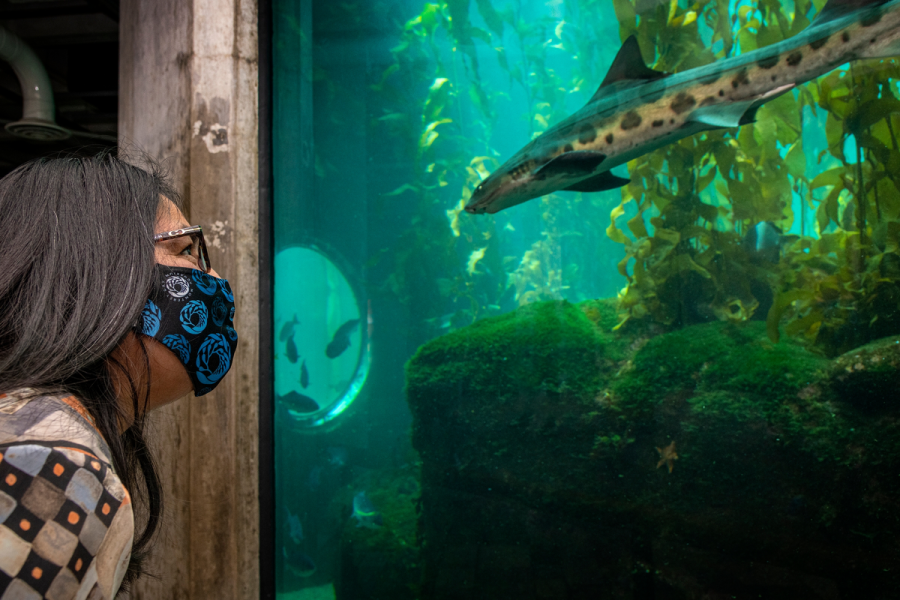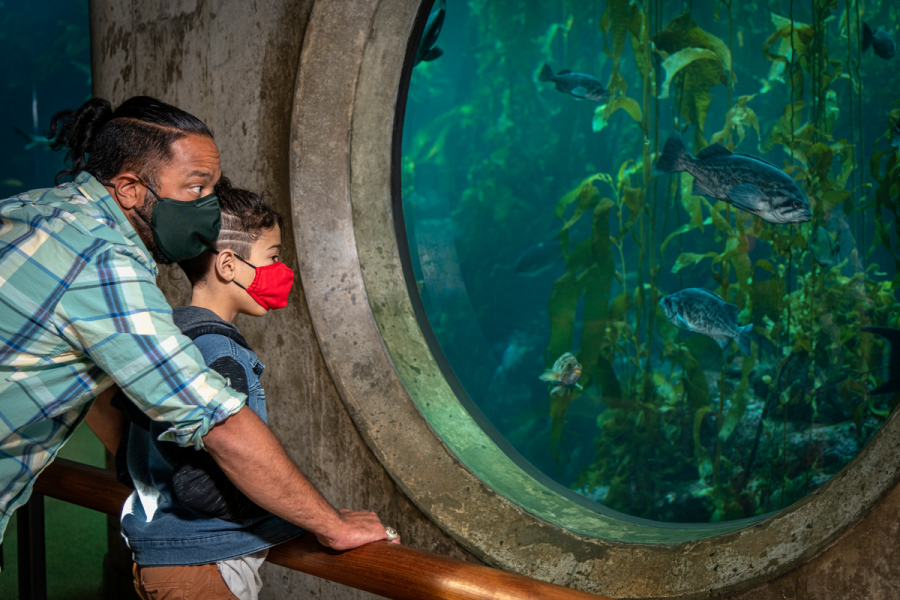New Ways to Earn Revenue

Since last March, the Monterey Bay Aquarium in California has faced the challenge of caring for more than 80,000 animals and plants on a weekly spend of $1.3 million, without the ability to collect revenue from admissions, says David Rosenberg, the aquarium’s vice president of guest experience.
“Losing 100% of admissions income for 11 months, with no reopening schedule, has put the Monterey Bay Aquarium in a position of extraordinary financial need,” he says.
To help offset the staggering $55 million loss in revenue for 2020, Monterey Bay Aquarium leadership did what so many other not-for-profit attractions did—they asked their fans for support while their doors were closed so they could hope to reopen again one day.
As the COVID-19 pandemic continues around the world, leaders from nonprofit attractions have had to get creative when it comes to generating revenue when they’re unable to rely on traditional sources.
The “Special Fund for the Aquarium” campaign began last year, where the Monterey Bay staff quickly learned how beloved they are by their community, fans, and guests. Supporters donated more than $25 million thus far, and the donations keep rolling in.
“We went to our circle of members and donors—those people who understand what we do and support our mission to inspire conservation of the ocean—to ask for the extraordinary support that is needed now,” says Rosenberg. “And they’ve responded with unprecedented generosity.”
More than 5,000 miles away, the Chester Zoo in the United Kingdom was on the brink of extinction, but loyal visitors from around the world kept the 90-year-old destination afloat during multiple countrywide lockdowns. Everything from running daily half marathons in silly costumes to virtual mountain climbs was became a creative fundraiser for the charity zoo, once described as one of the best 15 zoos in the world by Forbes.
“In the midst of the first lockdown, the U.K. government stated that U.K. zoos would be closed indefinitely. With no opening date in sight, we were left with no option but to launch a campaign to ‘Save Our Zoo,’” says Dominic Strange, director of operations at Chester Zoo. “This campaign called for support in a number of ways—either by donating, becoming a member, adopting an animal, or writing to your member of parliament to call upon the government to allow zoos to reopen. The donations poured in quickly—over £1 million in the first 24 hours of the appeal.”
By the end of 2020, contributions totaled £3.7 million, with donations coming in from 90 countries. That helped offset a £10 million deficit, says Strange.
Thinking Beyond the Ticket Sale
Approximately 60% of The Museum of Flight’s revenue comes from ticket sales, private event rentals, and public programming, says Ted Huetter, the museum’s senior manager of public relations and promotions.
Leaders at the Seattle, Washington, museum stayed relevant by reaching guests where they could: their computers. “Within weeks we had a new virtual museum launched,” says Huetter. “And that was something that came about as quickly as we closed.”
Beyond that, educational programs and guest lectures were made virtual to a greater level of success than museum staff were expecting.
“That actually opened up new opportunities with this online world that we have,” says Huetter, finding the silver lining in a pandemic. “It made visitors and speakers more available sometimes.”
By asking speakers to record their sessions—rather than commit to physically appearing at the Museum—the museum was able to expand its reach in terms of presenters and topics. That said, staff had to kick it up a notch to justify asking people to pay for access to certain online programs that might have otherwise been free before. To create a sense of value, The Museum of Flight expanded educational offerings—anywhere from a week to several weeks— and staff adding new levels of qualities that would convey a sense of worth to potential consumers.
Like others, The Museum of Flight also saw enormous success in fundraising efforts. A majority of the 18,000 to 20,000 members opted to renew their passes, and donors were more than willing to financially back the institution.
Monterey Bay Aquarium staff also tapped into virtual offerings and found new ways to boost some of their 10 live webcams.
With nearly 7.2 million individual website visits and more than 33 million page views since March of last year, webcam viewing accounts for 71% of overall website traffic. And although the webcams aren’t necessarily new—they’ve been offered since 2001—the staff has been able to get more creative in content delivery. By publishing the streams online on platforms like YouTube and Twitch, the team found a new revenue stream.
The Museum of Flight staff similarly deployed a work-with-what-you-have mentality and built all-new premium experiences to offer guests while still complying with local regulations for coronavirus closures.
These experiences offered small group, in-person experiences that gave access to exhibits and archives that could not be seen under normal operations. Options currently include “Cocktails with the Queen,” which features a tour of a Boeing 747 (known as the “Queen of the Skies” to aviation fans) and “The Firsts Tour… In SPAAAAAACE!,” which includes a peek inside the very first Apollo command module.
Strange says the Chester Zoo kept connected with guests by offering “Virtual Zoo Days,” which afforded staff the opportunity to encourage not only donations, but also promoted becoming a member and doing some shopping in the online store.

From the Expert
While fundraising can be a monumental task, success is usually found by organizations that know exactly from whom they should be asking for support, says Amy Eisenstein, a development professional and fundraising consultant for more than 20 years.
“Unfortunately, at the start of the pandemic, many nonprofit leaders made the decision to stop fundraising, falsely believing that it wasn’t a good time to reach out to donors,” says Eisenstein. “This was a huge mistake. Those organizations which communicated with their donors and continue to ask for support faired fare better than those that didn’t.”
Eisenstein says donors, individual and corporate, have a choice of where to give their money, and organizations need to recognize that.
“Nonprofit leaders should treat donors as the important partners to their institutions that they are,” she says. “This means expressing gratitude and letting donors know the impact that they’ve had on the organization.
